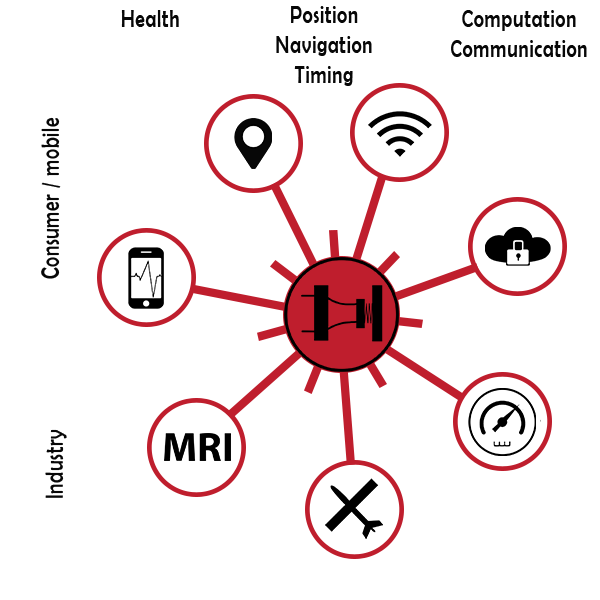
Health
In magnetic resonance imaging, it is necessary to sensitively read out radio-frequency magnetic fields as accurately as possible. An opto-electro-mechanical transducer capable of converting this radio-frequency signal into an optical signal would enable ultrasensitive detection, allowing faster and more detailed imaging.
Communication
The most successful qubits work predominantly in the microwave domain while nearly all long-range communication is done in the optical domain via optical fibers. It is therefore of crucial importance to be able to transfer quantum information between these two domains to create usable quantum technologies. HOT will engineer on-chip microwave-to-optical transducers based on opto-electro-mechanical systems.


Sensing
HOT will improve two technologies essential for radar detection: non-reciprocal microwave devices and low phase-noise microwave oscillators. Microwave circulators and isolators would allow for better operation of radar in areas with radiofrequency interference. Low phase-noise oscillators increase the sensitivity of radar detection, potentially allowing longer-range radar or detection of smaller objects. These advances could be utilized both for automotive and defense applications.
Consumer
Utilizing mechanical metamaterials with extremely strong coupling between motion and electromagnetism, HOT will create mechanical switches and other devices that require only a single photon for actuation. Lowering the energy required for HOT devices will allow a wider variety of sensors to be deployed in autonomous devices aimed for the consumer’s smart home.


Safety
The detection and generation of terahertz radiation is a challenging problem with large potential benefits, including airport security and food safety. Terahertz radiation adds a new tool to sensing and imaging applications as it penetrates most nonmetallic substances while simultaneously being non-ionizing and thus poses no health risks. HOT seeks to provide plasmon-vibrational materials for terahertz detection by engineering molecular optomechanics systems. Plasmonic-vibrational systems can show extremely strong coupling between mechanical position and optical fields. Such systems would also be ideally suited for parallel detection of small-adhered masses, and thus lend themselves to performing trace gas detection or mass spectroscopy.

